Object-size Smart Export
The video pipeline utilizes the Render Settings to export object-size image sequences or videos by objects, and then you can import the desired objects and incorporate them into video footage in any video editor such as Movavi, DaVinci Resolve, or Adobe Premiere, for multi-layer editing and special visual effects such as lighting, shadows, or color correction.
The benefits of the Object-size Smart Export are:
- Animated objects with the optimized bounding can composite with other video footage with ease.
- Freely transform, rotate, or scale objects and adjust layer orders in a video editor for video compositing.
- Static objects are filtered out to single images can make it easier to manage your objects and meanwhile save the output time and storage space.
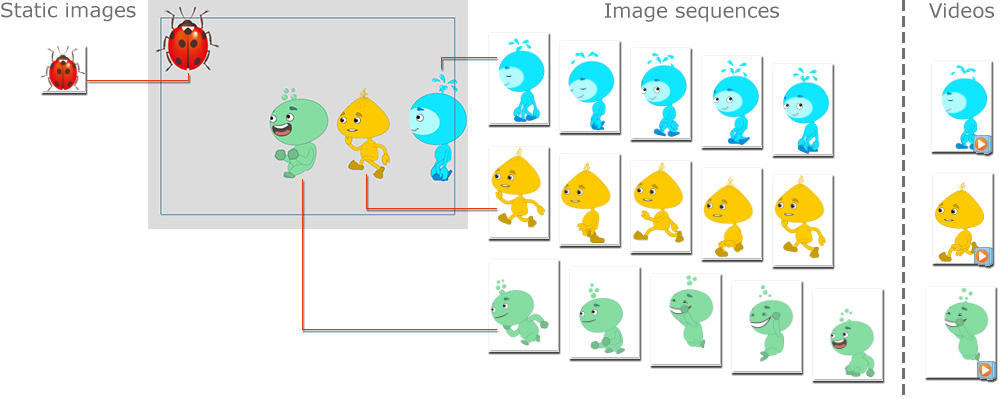
Follow the steps below to export the desired objects into object-size image sequences or videos.
- Create a project with some objects in Cartoon Animator.
Show objects you wish to export in the Scene Manager (characters made by azbuss in this case).
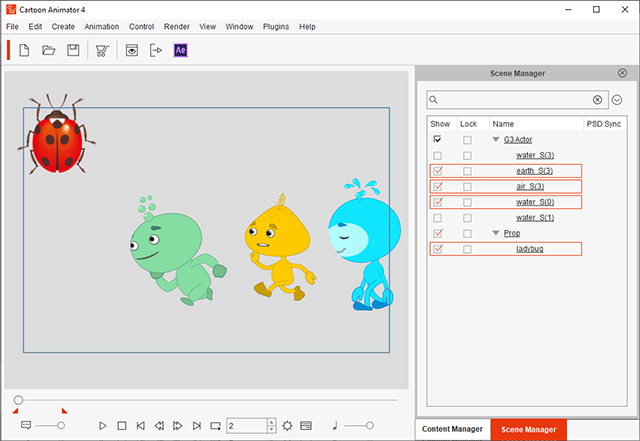
- Click the Render button on the Project Toolbar.

Alternatively, execute the Render >> Render Object Sequence command from the Main Menu.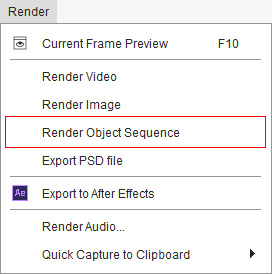
- The Render Settings panel will open.
Choose the target media type and format for exporting the object sequences.
It can be PNG, TGA image sequences, or MOV videos.
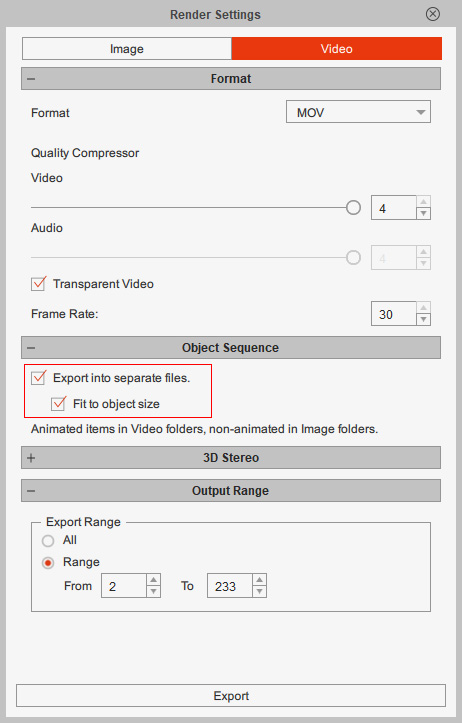
- Activate the Export into separate files and Fit to object size checkboxes in the Object Sequence section to separately render objects with their original size and maximum bounding which fits the motions.
- After setting the output range,
click the Export button and browse to a location where you wish to output the object layers.
When the rendering is done,
the browser window will show with the CTA package inside the target folder.
- The output result under the Image tab - image sequences of animated objects will be generated in the Sequence Image folder,
while the images of static objects will be generated in the Single Image folder.

- The output result under the Video tab - individual videos of animated objects will be generated in the Video folder,
while the images of static objects will be generated in the Single Image folder.

- Note that when the motion offset of an object is detected to exceed the maximum MOV output size (4096 x 4096),
a message will pop up as shown.
You can review the excluded objects through the link on it,
before clicking OK to generate the PNG image sequences instead of a MOV video.
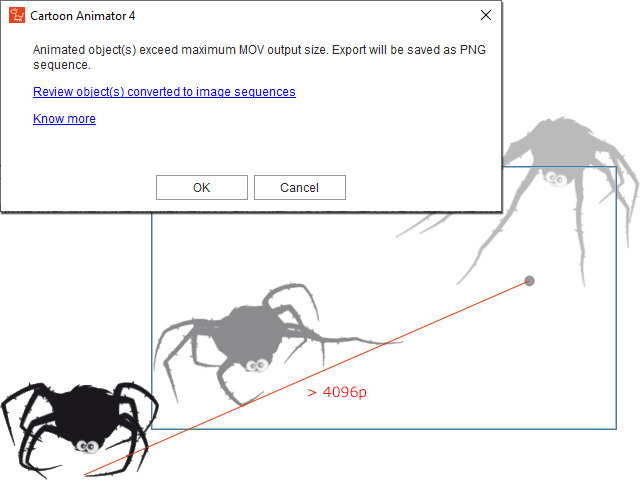
The motion offset of an object, or between an object and its Sprite element or attached accessory exceed 4096 pixels.
- Note that when the motion offset of an object is detected to exceed the maximum MOV output size (4096 x 4096),
a message will pop up as shown.
You can review the excluded objects through the link on it,
before clicking OK to generate the PNG image sequences instead of a MOV video.
- The output result under the Image tab - image sequences of animated objects will be generated in the Sequence Image folder,
while the images of static objects will be generated in the Single Image folder.
After exporting, the displayed objects in the scene are output into corresponding folders -
Audio, Sequence Image, Single Image and Video.
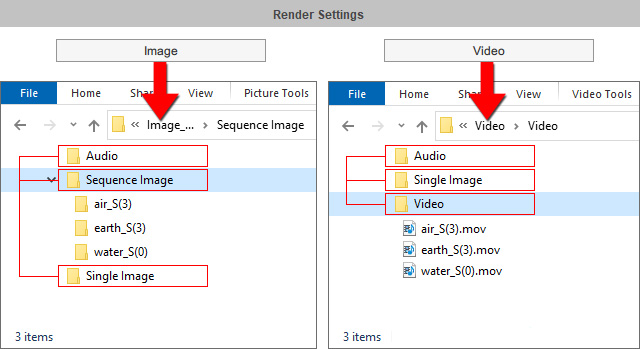
The audio data from the project Sound FX1, Sound FX2, Music tracks will be output to this folder,
no matter if object sequences are exported from the Image or Video tab.

- Clips on the each track under the Project main track will be output to one media file in WAV format, named after the track.
- When you render image sequences from the Image tab, object voice will also be output to this folder. For example, a character's voice on the Voice Clip track will be output to one media file in WAV format, named after the object.
If you export object sequences from the Image tab, image sequences of the animated objects will be generated to their respective folders under this folder. They can be Actor (along with its accessories), Prop, Scene Element, Image Layer, Text Bubble, Effect or Background.
The rendered image sequences will be the original size of the objects and fit their maximum bounding for the motions.
That is, they are not limited by the Safe Area as shown.
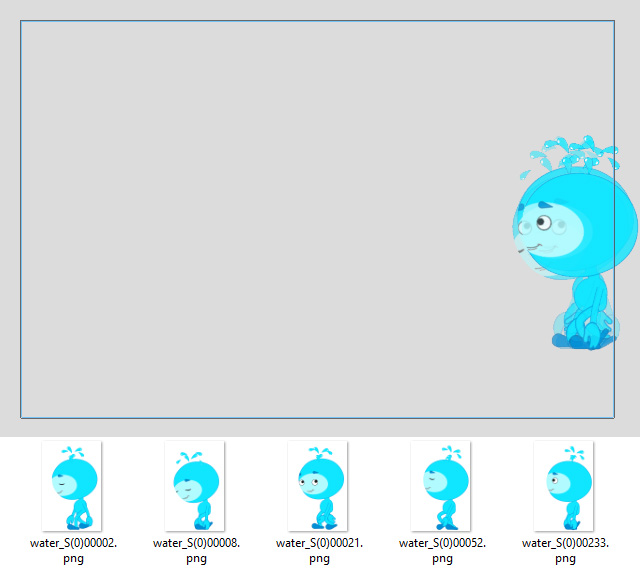
- If the object is set to invisible in certain time frames,
the transparent PNG image sequences will be output in black,
which indicates the alpha channel at 0, as shown.
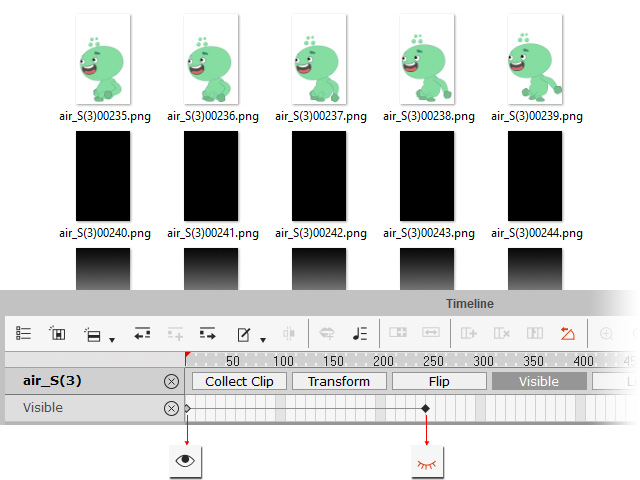
- After importing CTA objects to a video editor, you can freely position, rotate or scale them to composite them with any video footage.
The static background, objects, or objects with transformation keys only can be output to this folder,
no matter if object sequences are exported from the Image or Video tab.
The rendered images will be the original size of the objects.
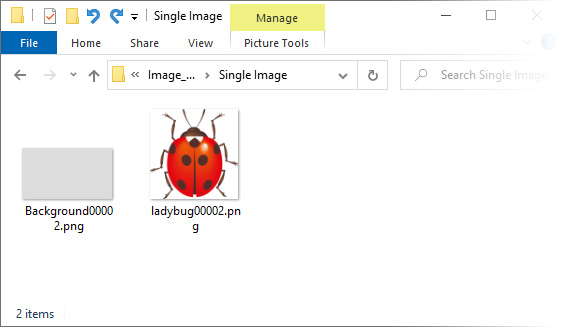
- The Prop, Scene Element, Image Layer, Text Bubble or Effect without animation or animated with Transformation keys (on the Transform track) only will be output as a single image, you can manually transform, rotate or scale these objects freely to composite with other media in a video editor.
- The background image may come from the Scene > Background library or the preset background color or image in the Project Settings panel.
If there is no background image applied, the default background, grey as shown in the viewport, will be generated in a format you specified.
 Note:
Note:The background media can be video from drag-and-dropping. When you export from the Image tab, image sequences will be output to the Sequence Image folder. When you export from the Video tabor, a video will be output to the Video folder.
If you export object sequences from the Video tab, an individual video of each animated object will be generated to this folder. They can be Actor (along with its accessories), Prop, Scene Element, Image Layer, Text Bubble, Effect or Background.
The rendered videos will be the original size of the objects and fit their maximum bounding for the motions. That is, they are not limited by the Safe Area.
The object animation in the viewport. | The object video presents complete animation at the original object size. |
- When the movement of an object exceeds the maximum MOV output size (4096 x 4096), the PNG image sequences will be generated in the Sequence Image folder instead of a MOV video in this folder.
- The object video will contain the voice from an object when you render videos from the Video tab.
For example, a character's voice on the Voice Clip track is contained in the generated object video.
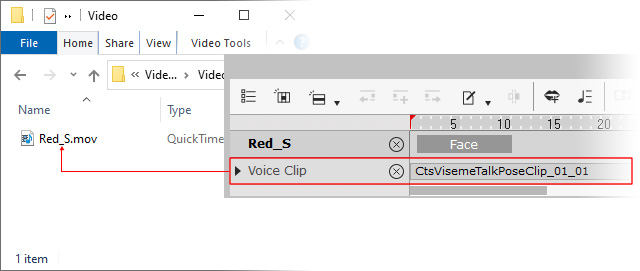
- After importing CTA objects to a video editor, you can freely position, rotate or scale them to composite them with any video footage.